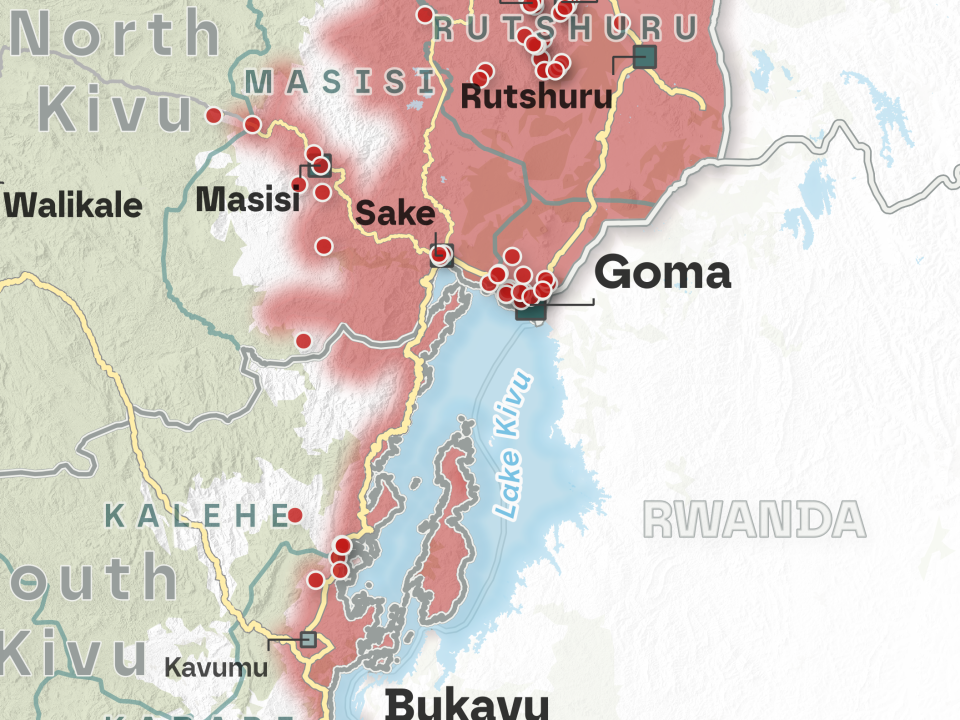
The (new) M23 offensive on Goma: Why this long-lasting conflict is not only about minerals and what are its implications? – Q&A
By the morning of January 29th, the rebels largely controlled the strategic city of Goma. To provide a quick and understandable explanation of the causes of this humanitarian crisis, the role of natural resources, and in particular minerals, is often overemphasized. While mining and mineral trade inevitably play an important role — being a vital part of the local economy — it is important to assess economic assets more broadly, as well as political interests and social grievances.
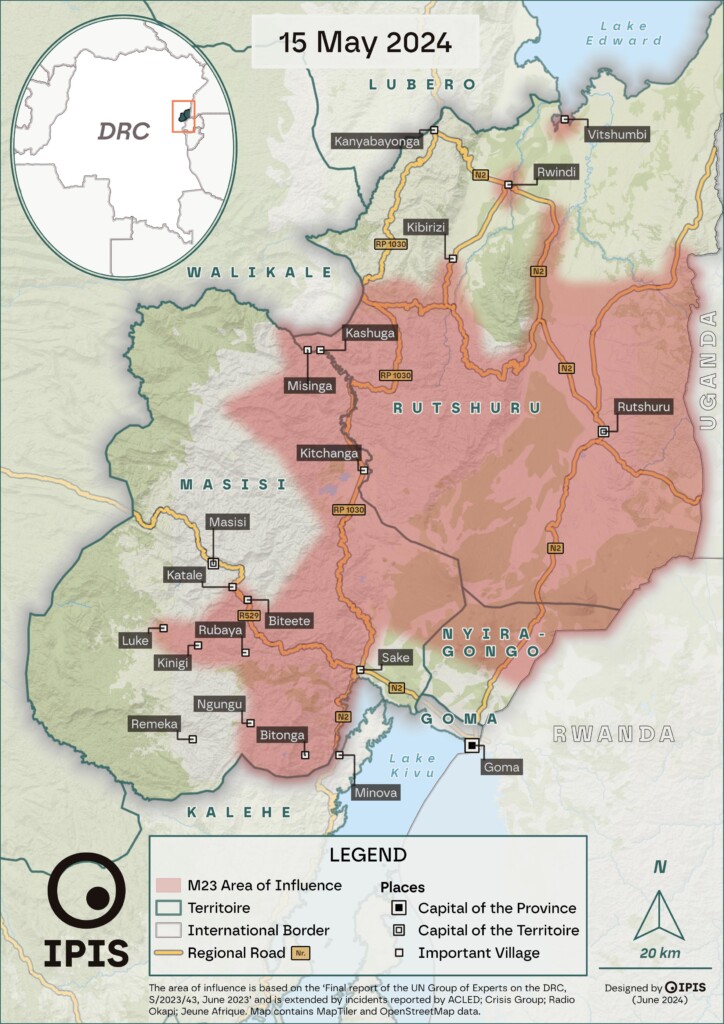
Shifting frontlines: Visualizing the evolution of the M23’s territorial influence in early 2024
In early 2024, IPIS, ASSODIP, and DIIS published a report on the stakes and motivations of the “March 23 Movement” (M23), a rebellion causing serious insecurity and humanitarian suffering in the eastern Democratic Republic of Congo (DRC). The movement took up arms again in 2021, and it rapidly seized vast territories in the south-east of North Kivu province in 2022, with military support from the Rwandan army. The IPIS-ASSODIP report included several maps, displaying the areas influenced by M23 up to 2023 […]

The M23 “version 2” – Local stakes, motivations, perceptions, and impacts
Since 2021, the eastern part of the Democratic Republic of Congo (DRC) has once again fallen victim to the “March 23 Movement” (M23). Supposedly defeated in 2013, the M23 took up arms again in 2021, and by 2022 had rapidly seized vast territories in the south-east of North Kivu province.
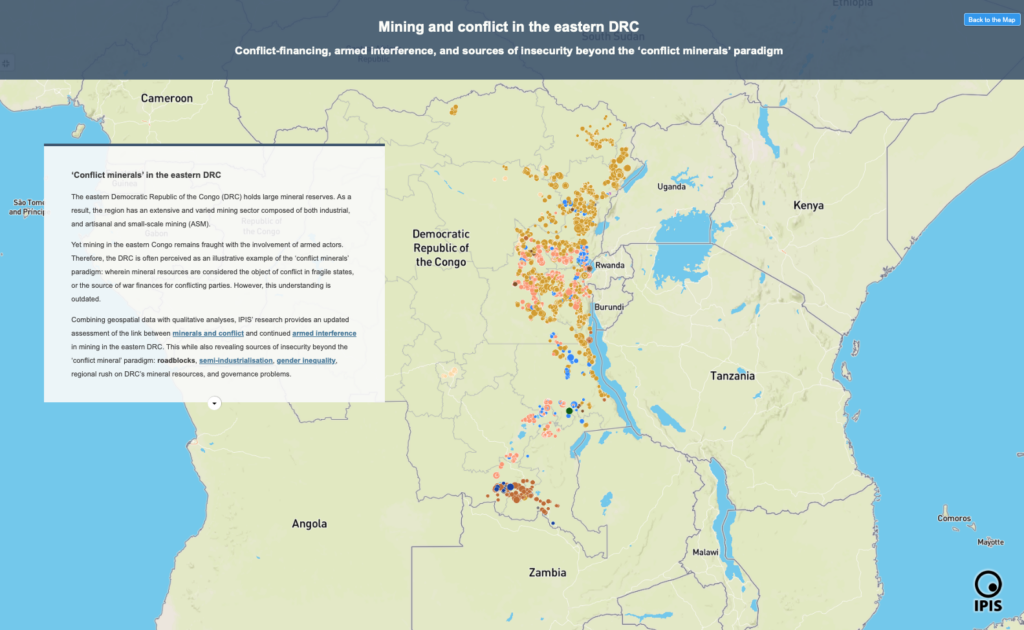
Mining and conflict in the eastern DRC: An interactive story map
Conflict-financing, armed interference, and sources of insecurity beyond the ‘conflict minerals’ paradigm In this story map, IPIS presents its findings on the linkage between mining
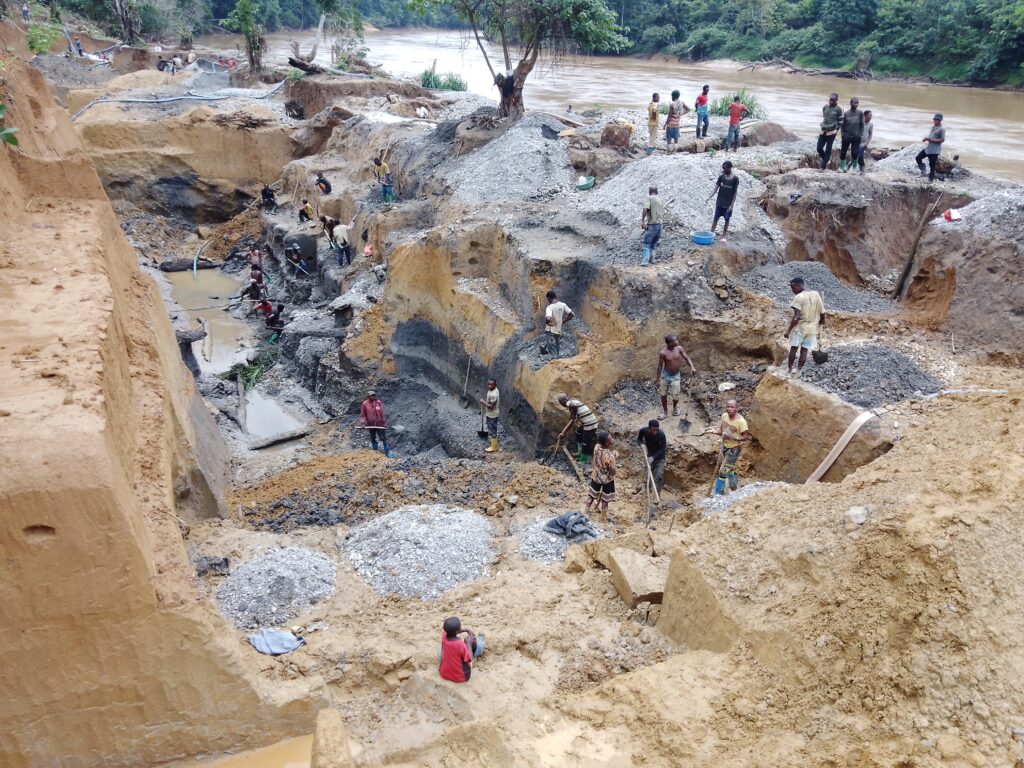
Analysis of the interactive map of artisanal mining areas in eastern Democratic Republic of Congo (2023 update)
Since 2009, IPIS has mapped and collected data at more than 2,800 Artisanal and Small-scale Mining (ASM) sites in the eastern Democratic Republic of the
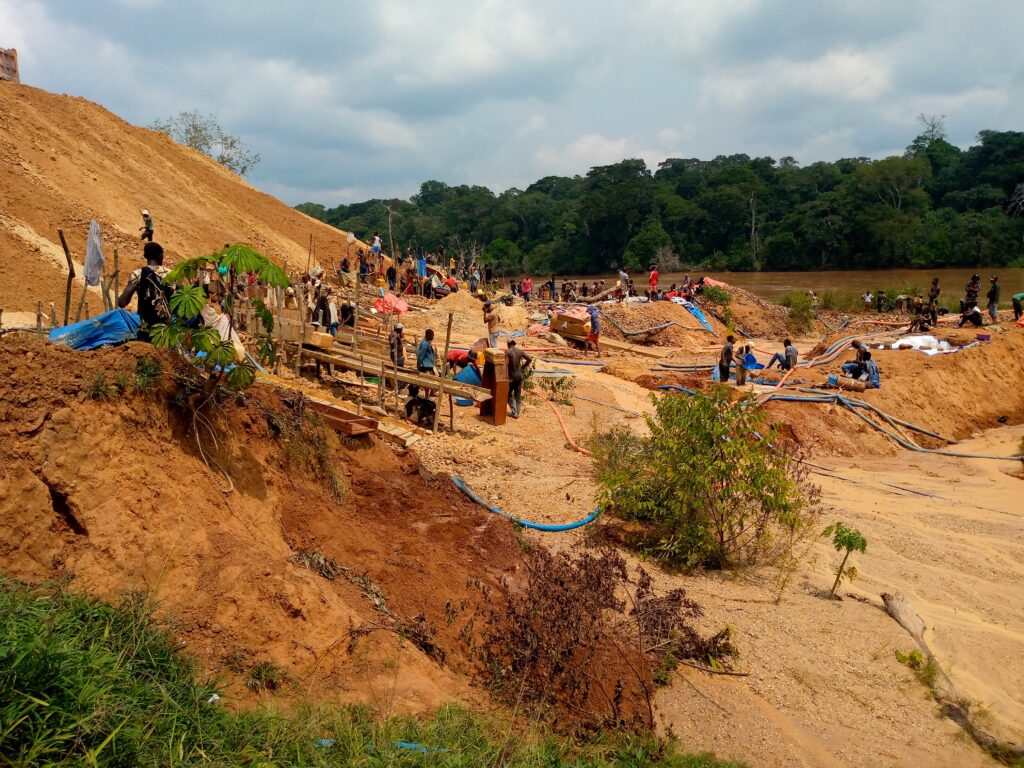
Mapping of artisanal mining sites in western Mambasa, Ituri Province, Democratic Republic of the Congo
The western part of Mambasa territory, in Ituri province, has been overlooked by national authorities and international partners. This despite major expansions of artisanal and

Responsible mining scorecard in eastern DRC
Over the years, IPIS has systematically collected mine site and trade hub level data on artisanal and small-scale mining (ASM) in eastern DRC. This data collection has enabled IPIS to generate a sizable database of more than 3,000 ASM sites that draws both on sites visited by IPIS and data from third party sources including the Congolese mining cadastre and the Ministerial qualification teams. This database is the point of departure of the Responsible mining scorecard (RMS).

Maps of artisanal and small-scale mining in eastern DRC
IPIS has created large format maps of known past and present ASM sites in eastern DRC. These A0 maps cover the provinces of Haut Uele,
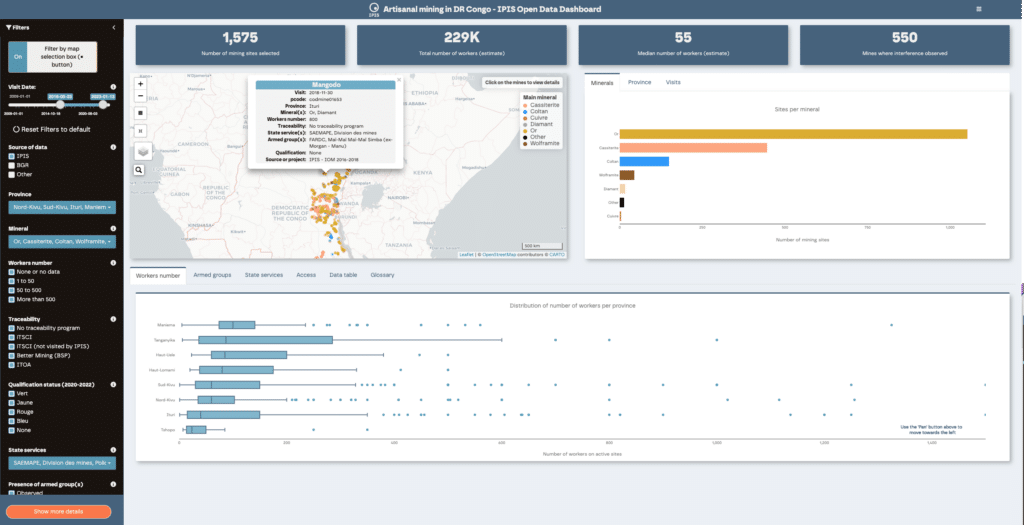
IPIS Open Data dashboard on Artisanal and Small-Scale Mining in eastern DRC
The IPIS Open Data dashboard on artisanal and small-scale mining (ASM) sector in the eastern Democratic Republic of the Congo (DRC) enables users to query and subset IPIS Open Data using various combinations of filters. The dashboard was designed to complement the IPIS Webmap of DRC.
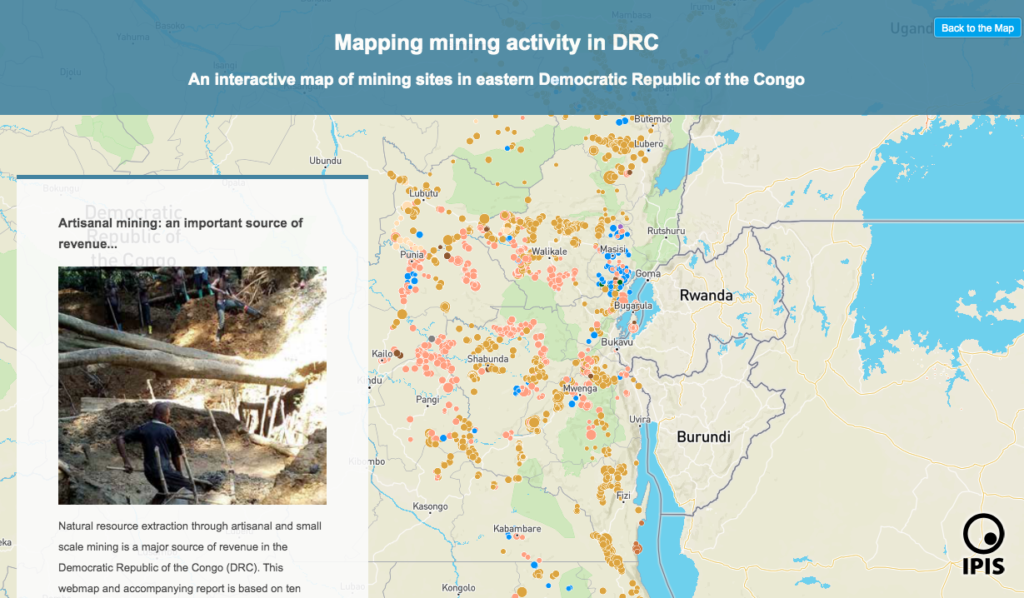
Story map of ASM sites in the DRC
Explore IPIS’ web map of the eastern Democratic Republic of the Congo (DRC) with a guided narrative In its new story map, IPIS presents data
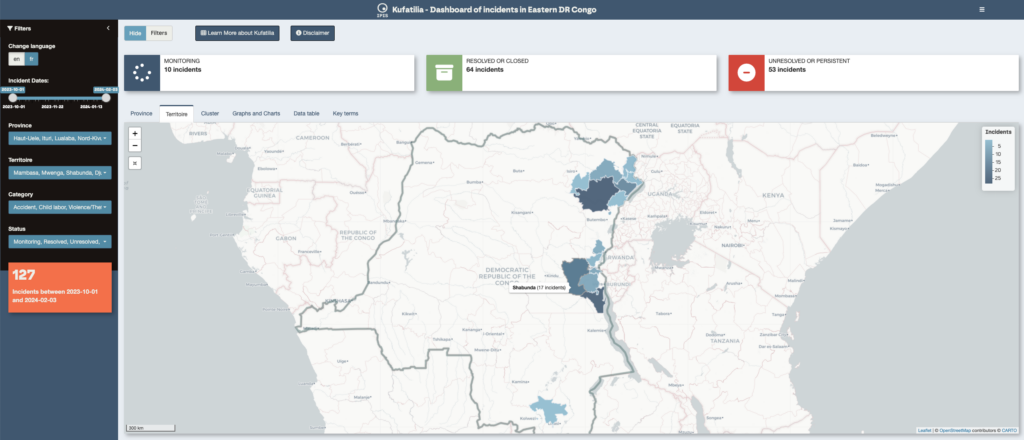
Dashboard of incidents in eastern DRC – Kufatilia
The Kufatilia platform (“to track” in Swahili) is an SMS based incident reporting and follow-up mechanism that has been launched in 2019 to increase transparency
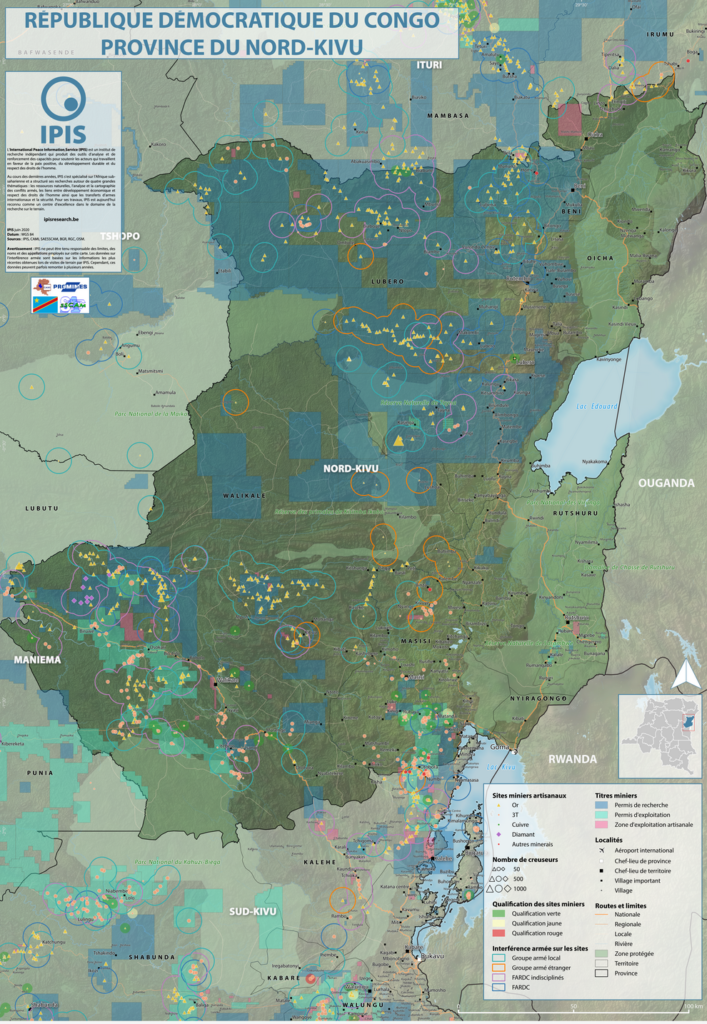
Maps of conflict minerals in Eastern DRC (2020)
IPIS created maps of conflict minerals in eastern DRC, more particularly on Haut Uele, Ituri and North and South Kivu. These maps detail the type

Mapping artisanal mining areas and mineral supply chains in eastern DRC (2019)
In a new report and webmap, IPIS presents its updated data on armed conflict and armed interference in eastern DRC’s artisanal mining sector. Building on

ASM Incident Tracker
Welcome to Kufatilia, the ASM Incident Tracker developed by IPIS in collaboration with the Expertise Centre on Mining Governance (CEGEMI) based in Bukavu, and powered
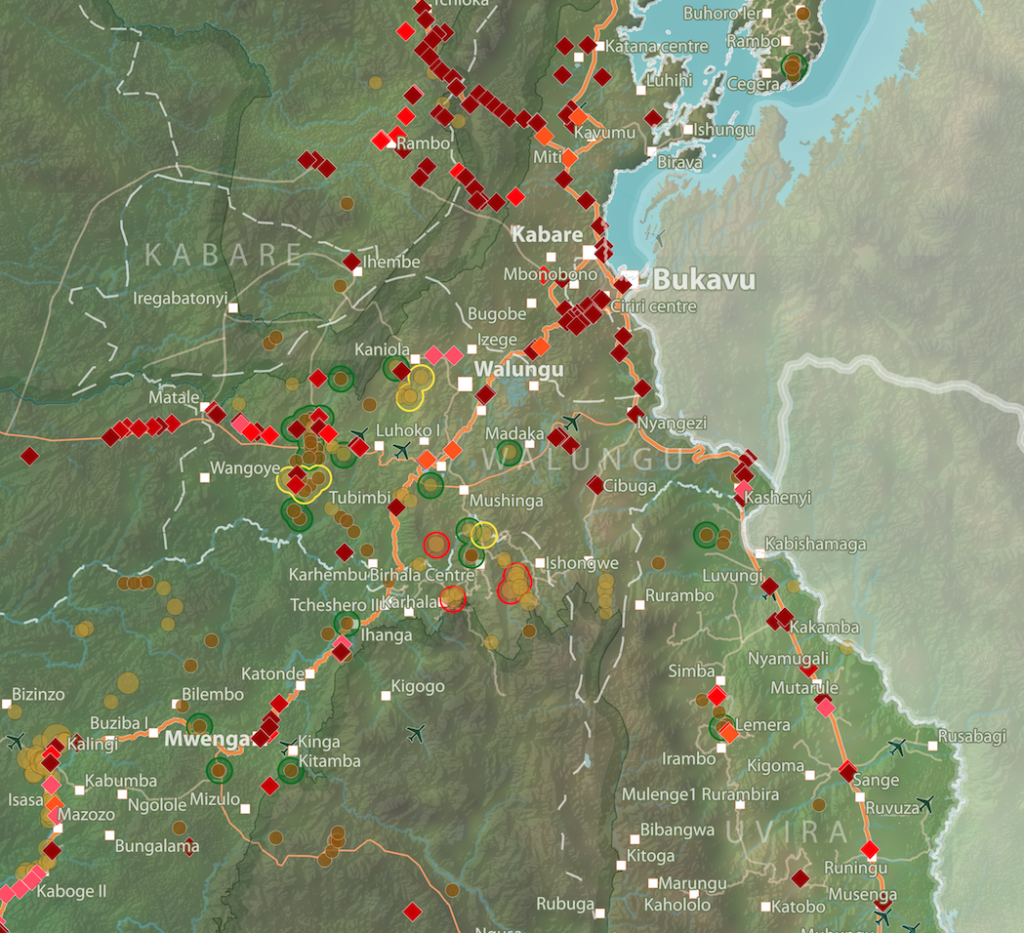
Roadblocks and artisanal mining sites – North and South Kivu Provinces (2018)
This map show the location of roadblocks and artisanal mining sites in the Kivu provinces. It was made by combining data from our recent report
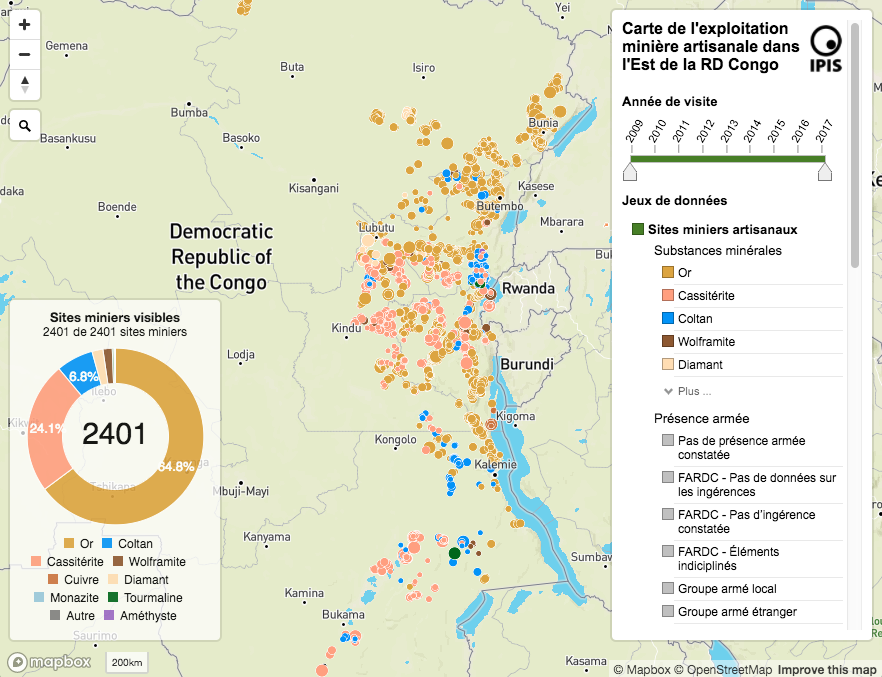
Interactive map of artisanal mining exploitation in eastern DR Congo – 2018 update
Résumé français ci-dessous – French summary below IPIS launched a major update of it’s DRC webmap displaying data on more than 2400 artisanal mining sites

Okapi Wildlife Reserve: Illegal Sourcing of Gold and Timber (2018)
A map of the Okapi Wildlife Reserve in DRC, created as a result of two mapathons focussing on illegal activities in the park.

“Everything that moves will be taxed”: the political economy of roadblocks in North and South Kivu (2017)
IPIS puts roadblocks on the map as key mechanism of conflict funding besides natural resources, revealing its devastating scope in funding armed actors in Democratic
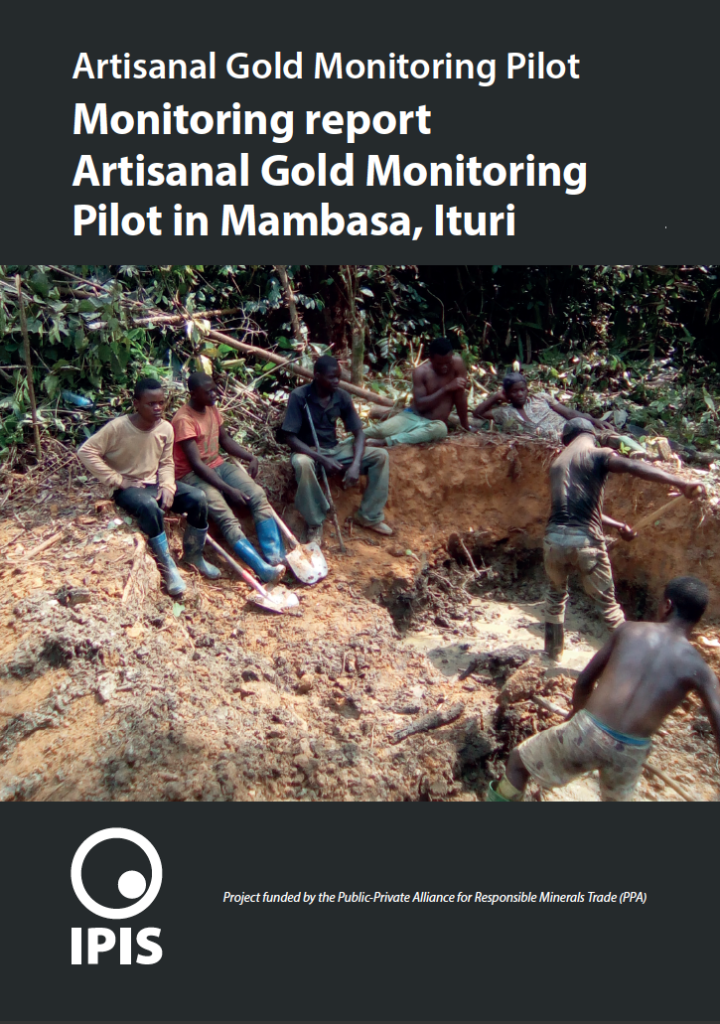
Artisanal Gold Monitoring Pilot (2017)
With the support of the Public Private Alliance for Responsible Minerals Trade (PPA), IPIS set up its Artisanal Gold Monitoring Pilot in Mambasa (Ituri Province,
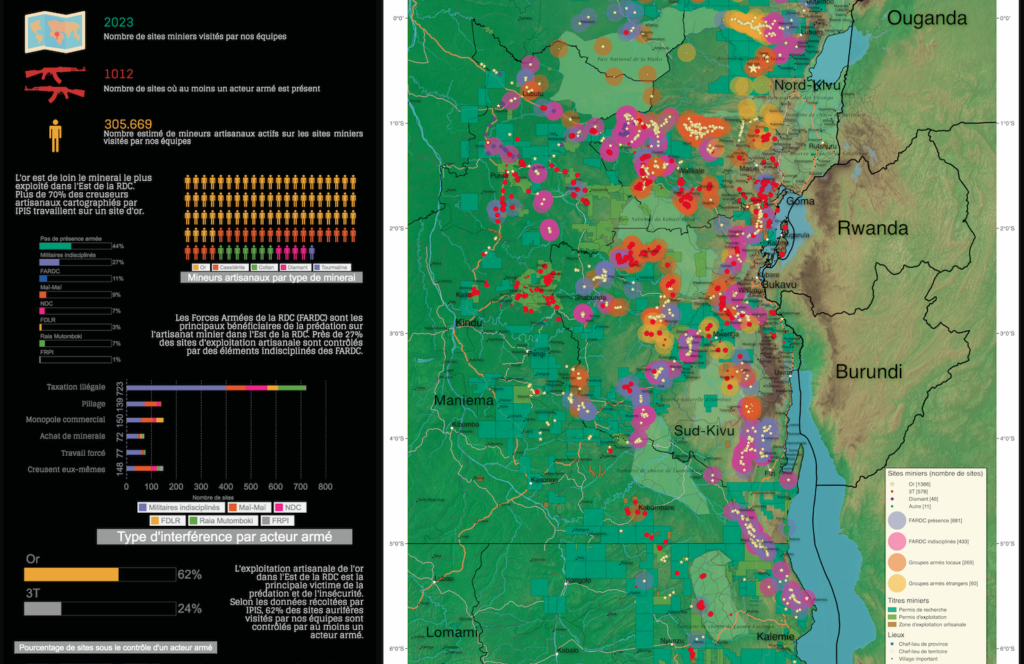
Conflict Minerals in Eastern DRC (2017)
Printing maps of conflict minerals in Eastern DRC.
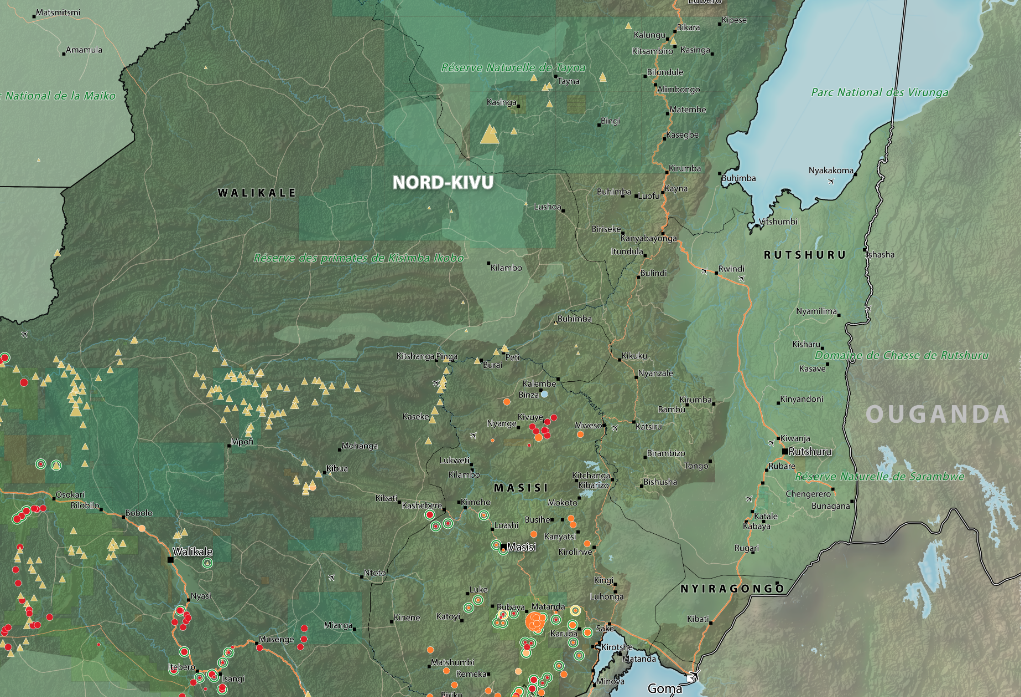
Maps of Mining Sites in North Kivu (2017)
North Kivu Province – AO Map Lubero, Oicha, Butembo and Beni Territories – A0 Map Masisi Territory – A0 Map Masisi Territory, North
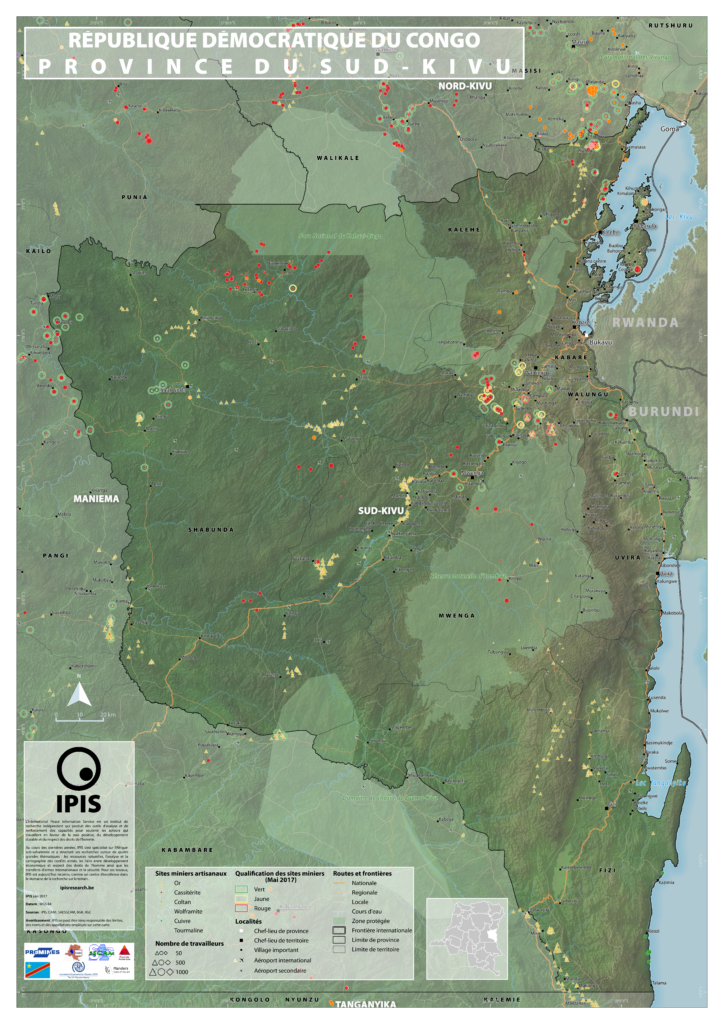
Maps of mining sites in South Kivu (2017)
South Kivu Province – A0 Map Walungu Territory – A0 Map Idjwi Territory – A0 Map Kabare Territory, South Kivu – A0 Map Kalehe Territory
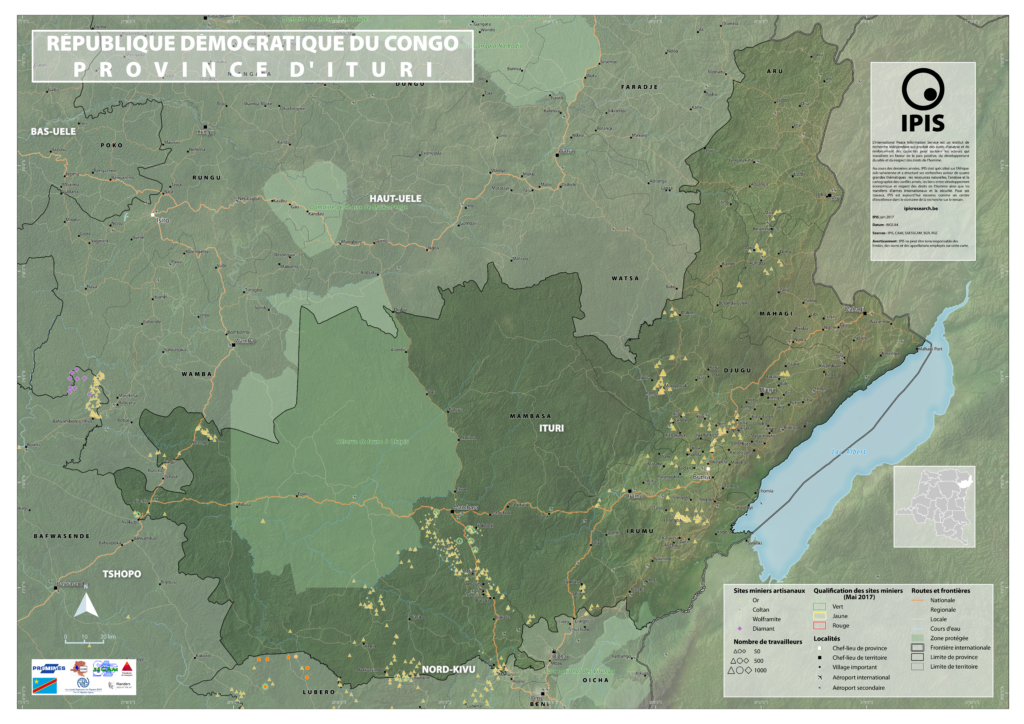
Maps of Mining Sites in Ituri (2017)
Map of Ituri Province of Ituri, DRC (Detail) Map of Mambasa Territory Territory of Mambasa, Province of Ituri, DRC (Detail)
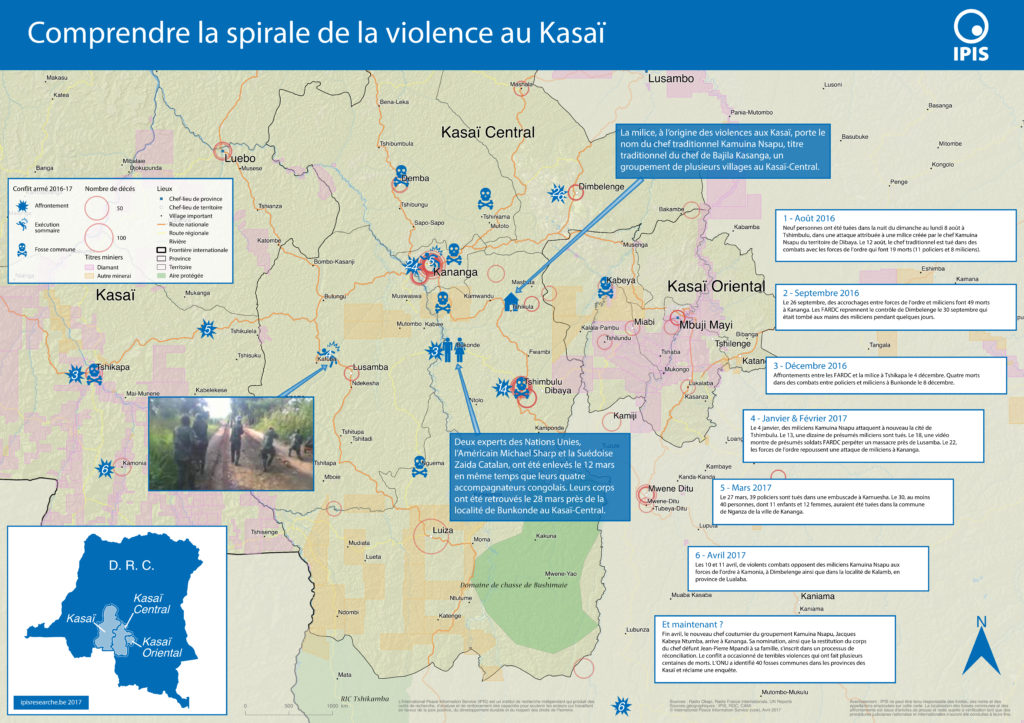
Comprendre la spirale de la violence au Kasaï (2017)
Le Kasaï Central et trois autres provinces voisines sont en proie à des violences mêlant miliciens, policiers et soldats et ayant fait, selon un rapport
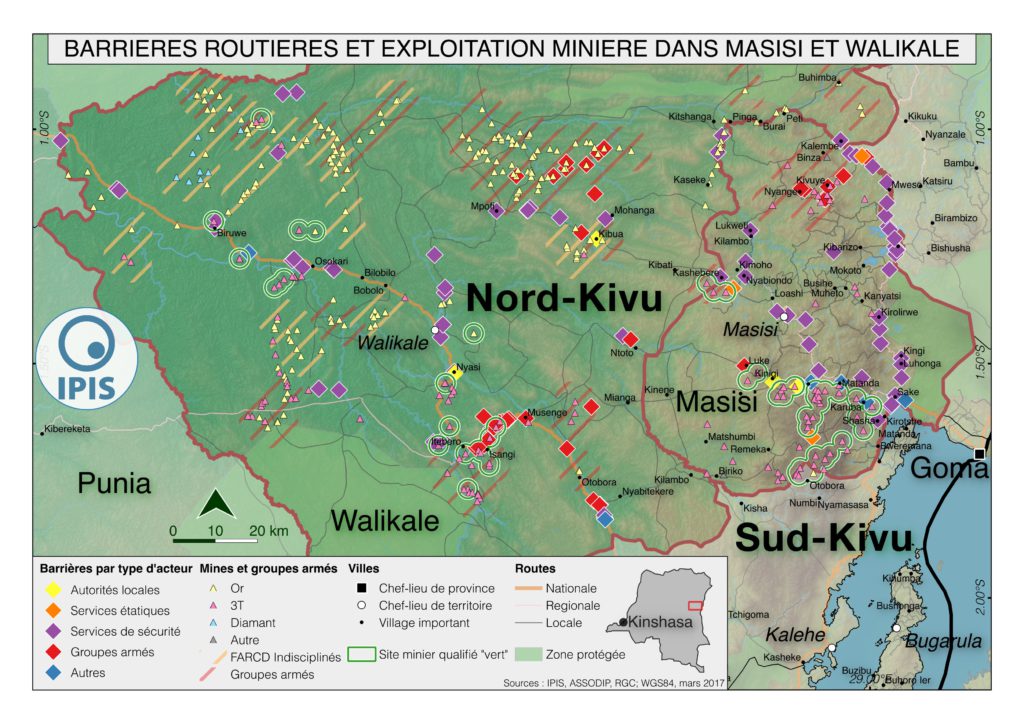
Pillage route: l’économie politique des barrages routiers à Walikale et Masisi (2017)
French version below – version française ci-dessous Roadblocks are a ubiquitous phenomenon in Eastern Congo. In an effort to map the scope of this

Analysis of the interactive map of artisanal mining areas in eastern DR Congo – 2015 update
The Belgian research group IPIS has collected data on 2026 artisanal mining sites in eastern DRC over the last couple of years. IPIS observed an
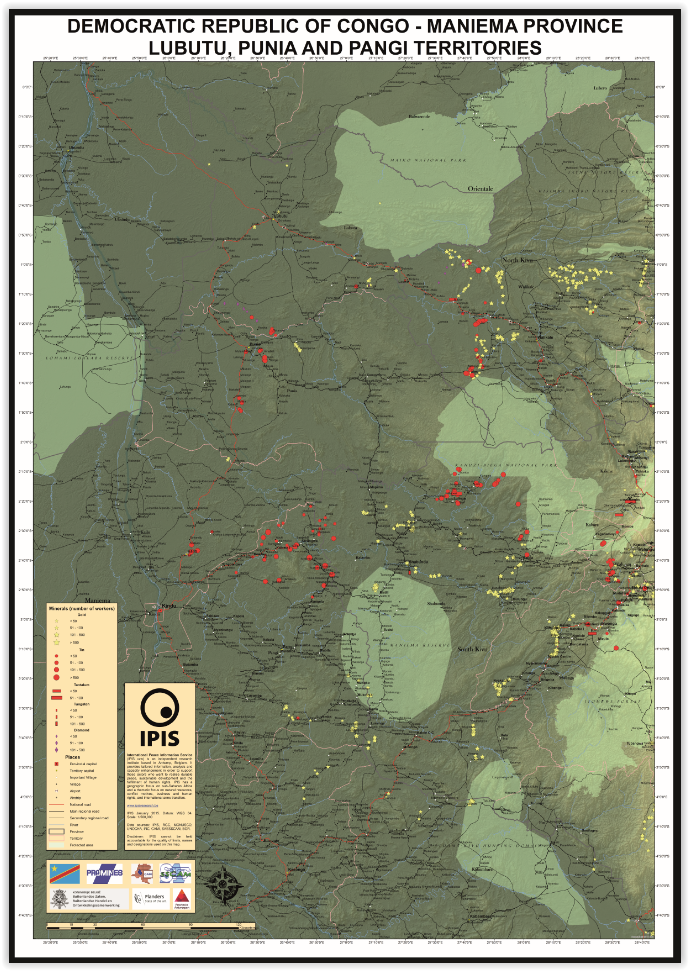
Maniema province – A0 map (2015)
This is an A0 map of the Lubutu, Punia and Pangi Territories in Maniema Province, DRC

Analysis of the interactive map of artisanal mining areas in Eastern DRC – May 2014 Update
In collaboration with the Congolese mining cadastre (CAMI), mining service SAESSCAM and representatives from local civil society organisations, IPIS organised a series of field visits
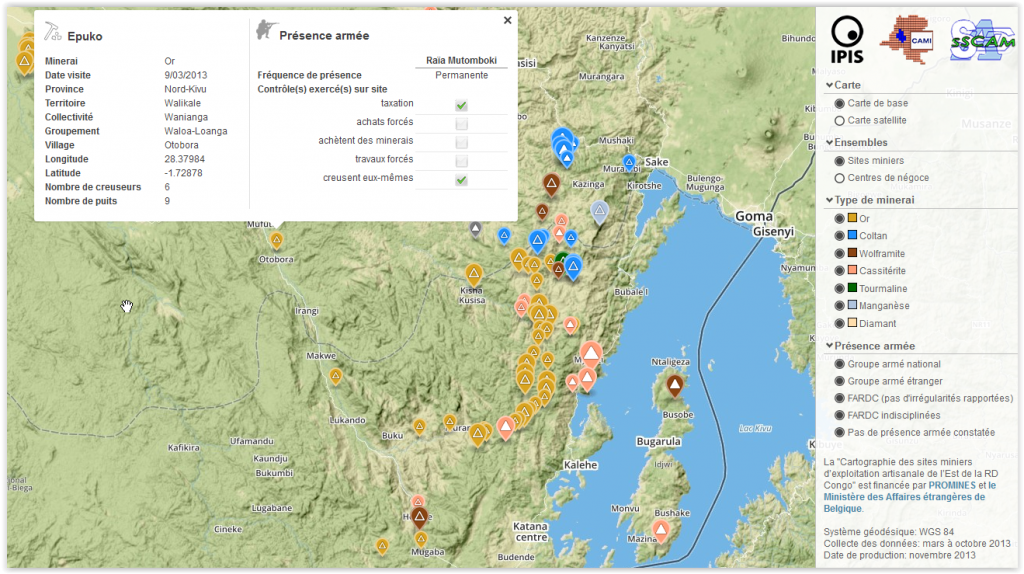
Analysis of the interactive map of artisanal mining areas in Eastern DR Congo (2013)
In August 2009 the ‘International Peace Information Service’ (IPIS) published a first map of militarised mining areas in Eastern DR Congo. By 2012, the international
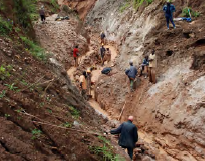
Mapping Conflict Minerals (2012)
How GMES supports the International Peace Information Service (IPIS), in: Window on GMES, Special Issue: Discover the “S” in GMES, pp. 82-88 Exploitation of natural
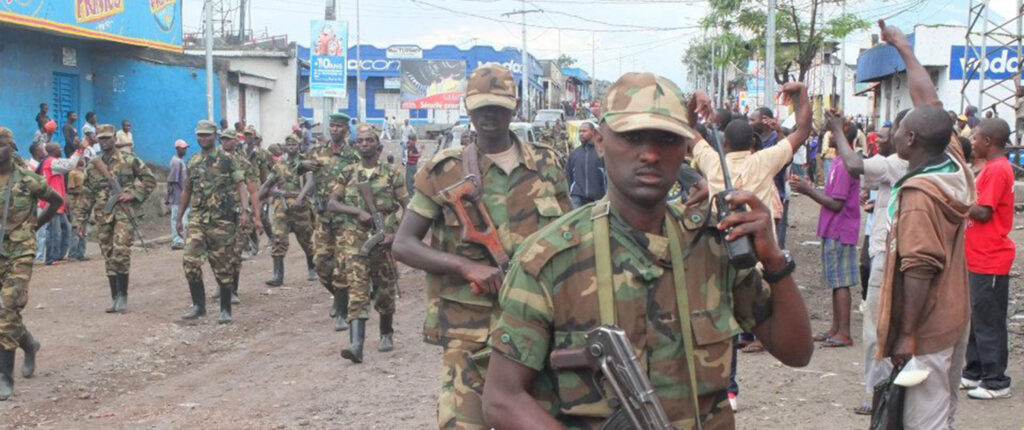
Mapping Conflict Motives: M23 (2012)
In light of the recent occupation of Goma by M23 and the renewed risk of large-scale armed conflict in the DRC, IPIS publishes an update
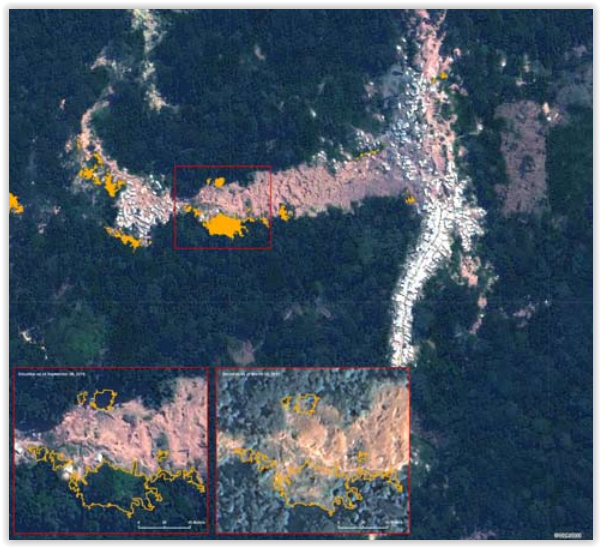
Bisie. A one-year snapshot of the DRC’s principal cassiterite mine (2011)
Much has happened in the mining sector of Eastern DRC over the last year. President Kabila imposed a ban on all mining activities last fall,
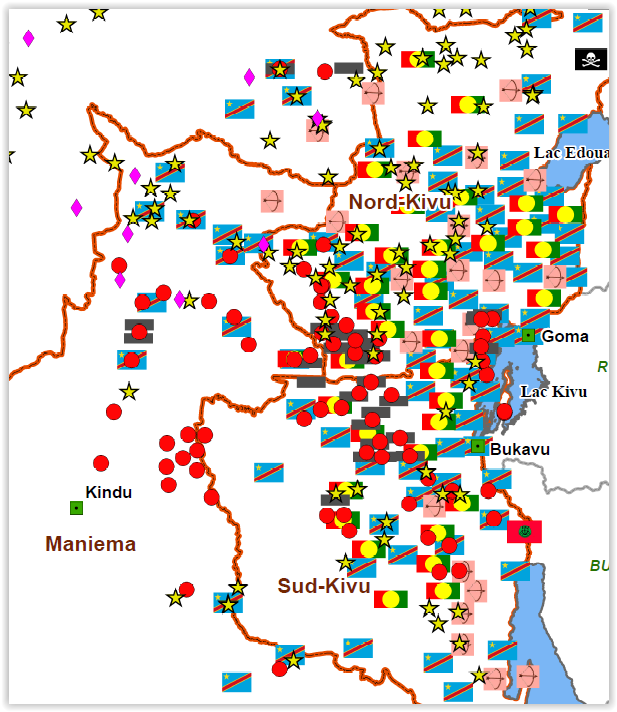
Simplified maps illustrating the link between natural resources and armed conflict in the DR Congo (2011)
Simplified maps illustrating the link between natural resources and armed conflict in the DR Congo (in French) (January 2011) At the request of different users
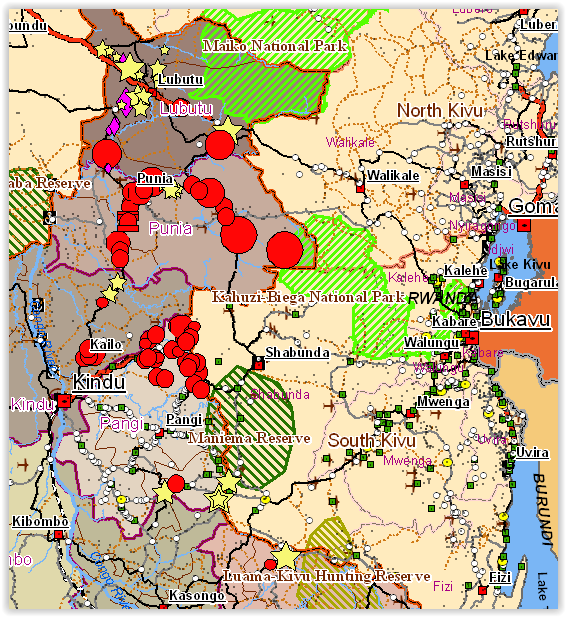
The complexity of resource governance in a context of state fragility: An analysis of the mining sector in the Kivu hinterlands (2010)
The report ‘Mining activity and mineral trade in the Kivu hinterland’ was commissioned by the Directorate General for Development (DG DEV) of the European Commission

Mining Concessions in the DR Congo (2010)
Mining Concessions in the DR Congo (August 2010) IPIS has produced an interactive web map of all mining concessions in the Democratic Republic of the
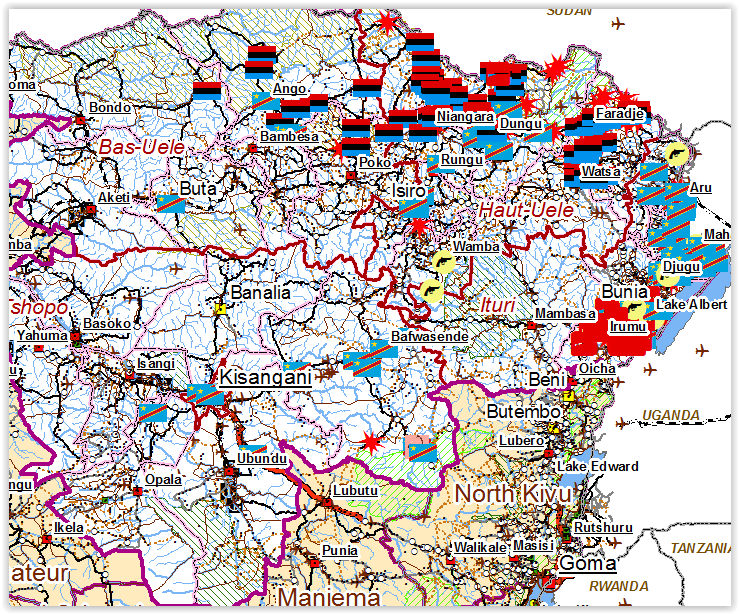
Mapping Conflict Motives: ‘Province Orientale’ (DRC) (2010)
The districts of Ituri, Haut-Uele, Bas-Uele and the territory of Bafwasende continue to suffer from armed groups. Generally speaking, the strength of the armed groups
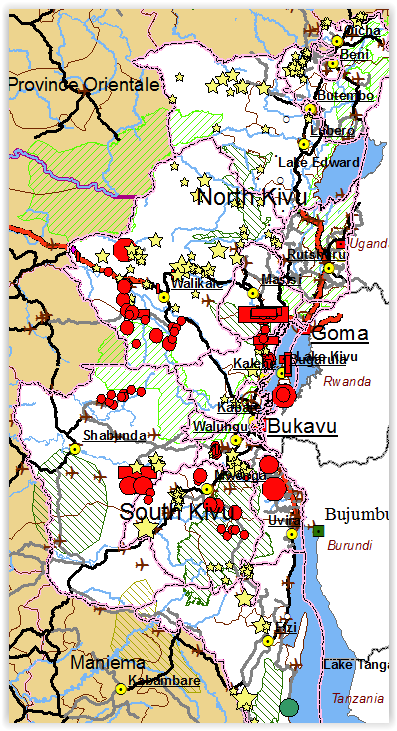
Accompanying note on the interactive map of militarised mining areas in the Kivus (2009)
The MiMiKi map is a snapshot of the situation as it was in the period May-July 2009. All the armed groups deployed in the region
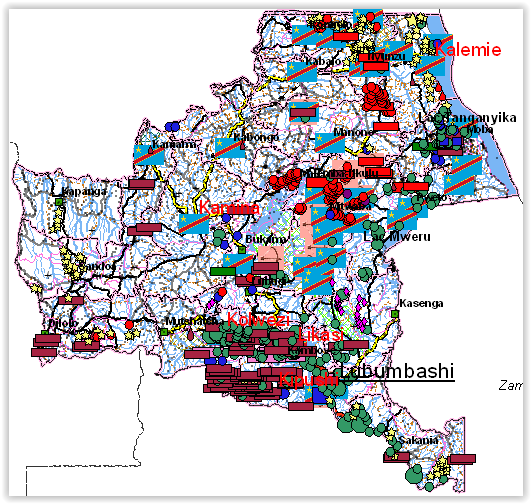
Mapping Conflict Motives: Katanga. (Update May- September 2008)
This report is the third (and for the moment the last) in a series of updates following an initial report on conflict motives in the
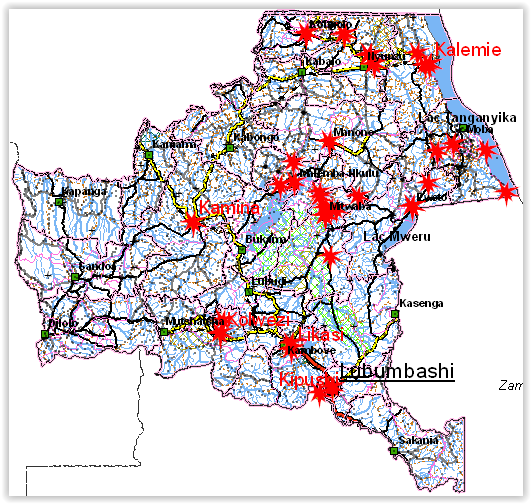
Mapping Conflict Motives: Katanga. (Update December 2007 – May 2008)
This report is the second in a series of updates following an initial report on conflict motives in the Congolese province of Katanga. It analyses
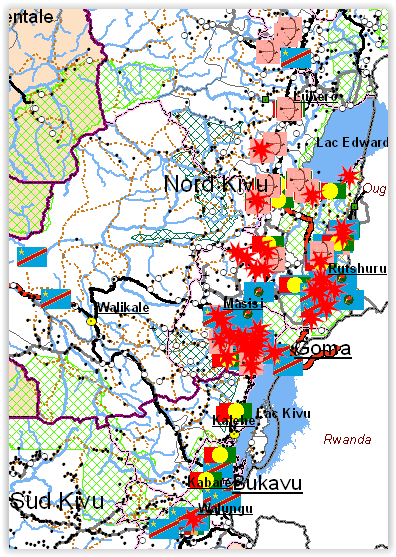
Mapping Conflict Motives: Eastern DRC (March 2008)
The eastern DRC is still plagued by violent conflict. The centre of the conflict is the ‘Petit Nord’ region where two large armed groups, a

Mapping interests in conflict areas: Katanga. (Update September-November 2007)
The International Peace Information Service (IPIS), a Belgium based research NGO, is a member of the Fatal Transactions consortium, which carries out the action ‘From

Mapping interests in conflict areas: Katanga (August 2007)
Revised version August 2007. ‘Mapping interests in conflict areas: Katanga’ reports on the presence of (ex-) combatants in the Congolese province of Katanga. It focuses



